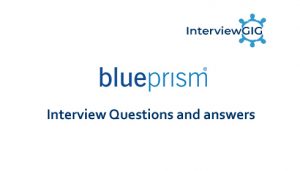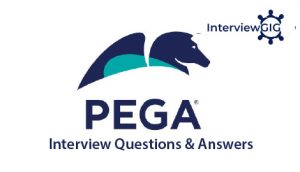Market Research Analyst Interview Questions
A Market Research Analyst is a professional who gathers, analyzes, and interprets data to help companies understand market trends, customer preferences, and competitive landscapes. This role involves designing surveys, conducting focus groups, and analyzing data using statistical software. The insights provided by a Market Research Analyst guide businesses in making informed decisions about product development, marketing strategies, and business expansion. Essential skills for this position include analytical thinking, attention to detail, and strong communication abilities. By translating complex data into actionable recommendations, Market Research Analysts play a crucial role in helping companies achieve their strategic goals and stay competitive in the market.
Here are some of the most commonly asked Market Research Analyst interview questions and answers for freshers and experienced candidates:
Question: Tell me about your experience in conducting market research.
Sample Answer: “I have a strong background in conducting both primary and secondary market research. In my previous role, I led projects to analyze market trends, consumer behavior, and competitive landscapes. For example, I conducted customer surveys and competitor analysis to identify growth opportunities, which directly contributed to a 10% increase in market share.”
Question: Can you explain your experience with data analysis and the tools you use?
Sample Answer: “I have extensive experience in data analysis, having worked with tools such as Excel, SPSS, SAS, and Python for statistical analysis. Additionally, I use data visualization tools like Tableau and Power BI to create insightful dashboards. In my previous role, I conducted comprehensive data analysis to identify market trends and customer behavior patterns, which helped inform strategic decisions for the company.”
Question: What is the difference between qualitative and quantitative research?
Sample Answer: Qualitative research focuses on understanding the underlying reasons and motivations, often using methods like interviews and focus groups. Quantitative research focuses on numerical data and statistical analysis to draw conclusions, commonly using surveys and experiments.
Question: How do you handle large datasets, and what techniques do you use to analyze them?
Sample Answer:
“I handle large datasets by leveraging tools like Python and R for efficient data processing and analysis. I use SQL for database management and ETL processes to extract, transform, and load data. For analysis, I apply techniques such as regression analysis, clustering, and predictive modeling to uncover patterns and insights. In a recent project, these techniques helped identify key customer segments and optimize marketing efforts accordingly.”
Question: How do you communicate your findings to non-technical stakeholders?
Sample Answer:
“I prioritize clarity and simplicity when communicating findings to non-technical stakeholders. I use visual aids such as charts, graphs, and infographics created with tools like Tableau and Power BI to make data easily understandable. Additionally, I present key insights and actionable recommendations in executive summaries and highlight the business implications of the data. This approach ensures that stakeholders can make informed decisions based on the research.”
Question: How do you ensure your market research is both reliable and valid?
Sample Answer: “I ensure reliability by using consistent data collection methods and tools, cross-verifying data from multiple sources, and conducting repeat tests when possible. For validity, I carefully design research methodologies to accurately measure what they are intended to, such as using representative samples and well-structured questionnaires. I also seek feedback from colleagues and stakeholders to refine my approach and validate findings against real-world outcomes.”
Question: Can you give an example of a successful research project you have completed?
Sample Answer: “In a recent project, I was tasked with understanding customer preferences for a new product line. I conducted a mix of surveys, focus groups, and competitor analysis to gather comprehensive data. My analysis revealed a strong preference for eco-friendly features, which was not initially considered. This insight led to the incorporation of sustainable materials in the product design and a targeted marketing campaign, resulting in a 25% increase in sales within the first quarter of the product launch.”
Question: How do you organize, assign, and manage leads, contacts, and other activities in a CRM system?
Sample Answer: “I use CRM systems like Salesforce to organize and manage leads and contacts efficiently. I assign leads based on criteria such as industry, geographic location, and lead score. I track all interactions and activities within the CRM to ensure timely follow-ups and maintain accurate records. This systematic approach helps in prioritizing leads and optimizing our lead conversion process.”
Question: How do you track lead generation campaigns and utilize metrics to quantify and report results?
Sample Answer: “I track lead generation campaigns using analytics tools integrated with our CRM and marketing platforms. I monitor key metrics such as open rates, click-through rates, conversion rates, and ROI. By analysing these metrics, I generate detailed reports that highlight campaign performance and areas for improvement. In a recent campaign, these insights helped us adjust our strategy mid-way, leading to a 40% increase in lead conversion.”
Question: How do you handle conflicting data or insights from different sources?
Sample Answer: “When encountering conflicting data, I first verify the credibility of each source and assess the context in which the data was collected. I look for underlying factors that might explain the discrepancies, such as differences in sample size, demographic focus, or time period. If needed, I conduct additional research to gather more data. I then present the conflicting insights to stakeholders, explaining the potential reasons and recommending a balanced approach based on the overall evidence.”
Question: How do you handle tight deadlines and pressure in your work?
Sample Answer: “I handle tight deadlines and pressure by staying organized, prioritizing tasks, and maintaining clear communication with my team. I break down projects into smaller, manageable tasks and set interim deadlines to stay on track. When facing high-pressure situations, I remain focused and avoid multitasking to ensure the quality of my work. I also ensure to take short breaks to maintain productivity and manage stress effectively.”
Question: Can you give an example of how your market research directly contributed to bringing in new hiring partners?
Sample Answer: “In a project aimed at expanding our hiring partner network, I conducted market research to identify potential partners who aligned with our goals. By analyzing industry trends and competitor partnerships, I created a targeted list of prospects. I then developed personalized outreach strategies, which led to successful engagements with several new partners, increasing our network by 25%.”
Question: Can you provide an example of how your market research influenced a business decision?
Sample Answer:
“In my previous role, I conducted a market analysis to determine the potential success of a new product in a specific region. My research indicated a strong demand but highlighted a need for certain feature modifications. Based on these findings, the company adjusted the product design and marketing strategy, leading to a successful product launch and a 20% increase in sales in that region within the first six months.”
Question: What methodologies do you use for qualitative and quantitative research?
Sample Answer: “For qualitative research, I often use focus groups, in-depth interviews, and ethnographic studies to gather detailed insights. For quantitative research, I rely on surveys, experiments, and observational studies. I design structured questionnaires and use statistical analysis to interpret the data. Combining both methodologies provides a comprehensive understanding of market dynamics and consumer behavior.”
Question: How do you generate and qualify outbound leads?
Sample Answer: “I generate outbound leads by leveraging multiple channels, including social media platforms like LinkedIn, email campaigns, and networking events. I qualify leads by assessing their potential through criteria such as industry relevance, decision-making authority, and expressed interest in our offerings. For instance, by targeting specific LinkedIn groups and using personalized email campaigns, I successfully increased our qualified leads by 30% in the last quarter.”
Question: Can you describe a typical day in your current/previous role as a market research analyst?
Sample Answer: “A typical day involves a mix of data collection, analysis, and communication tasks. I start by reviewing ongoing projects and prioritizing tasks. I might spend the morning conducting primary research through surveys or interviews and gathering secondary data from industry reports and online sources. In the afternoon, I analyze the data using statistical tools and prepare reports and visualizations. I also collaborate with cross-functional teams to share insights and provide recommendations for strategic decisions. Regular check-ins and progress meetings are also part of my routine.”




